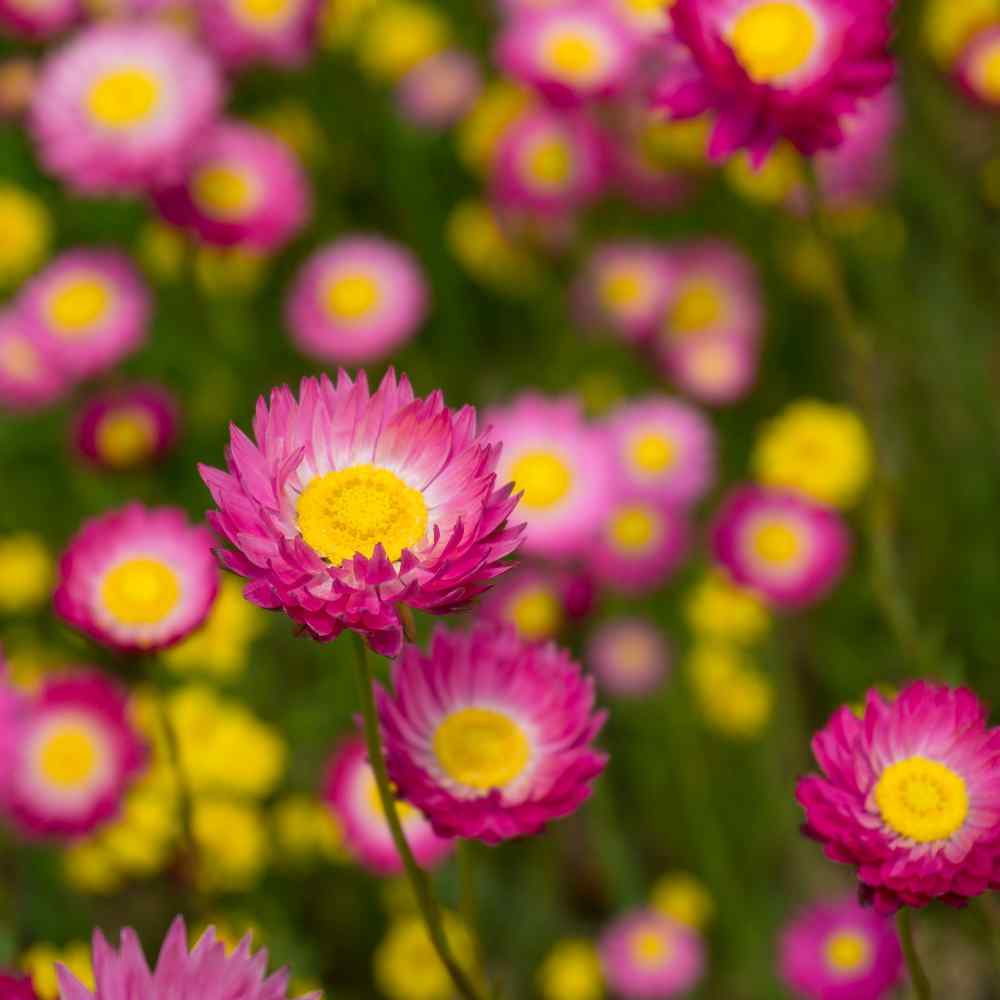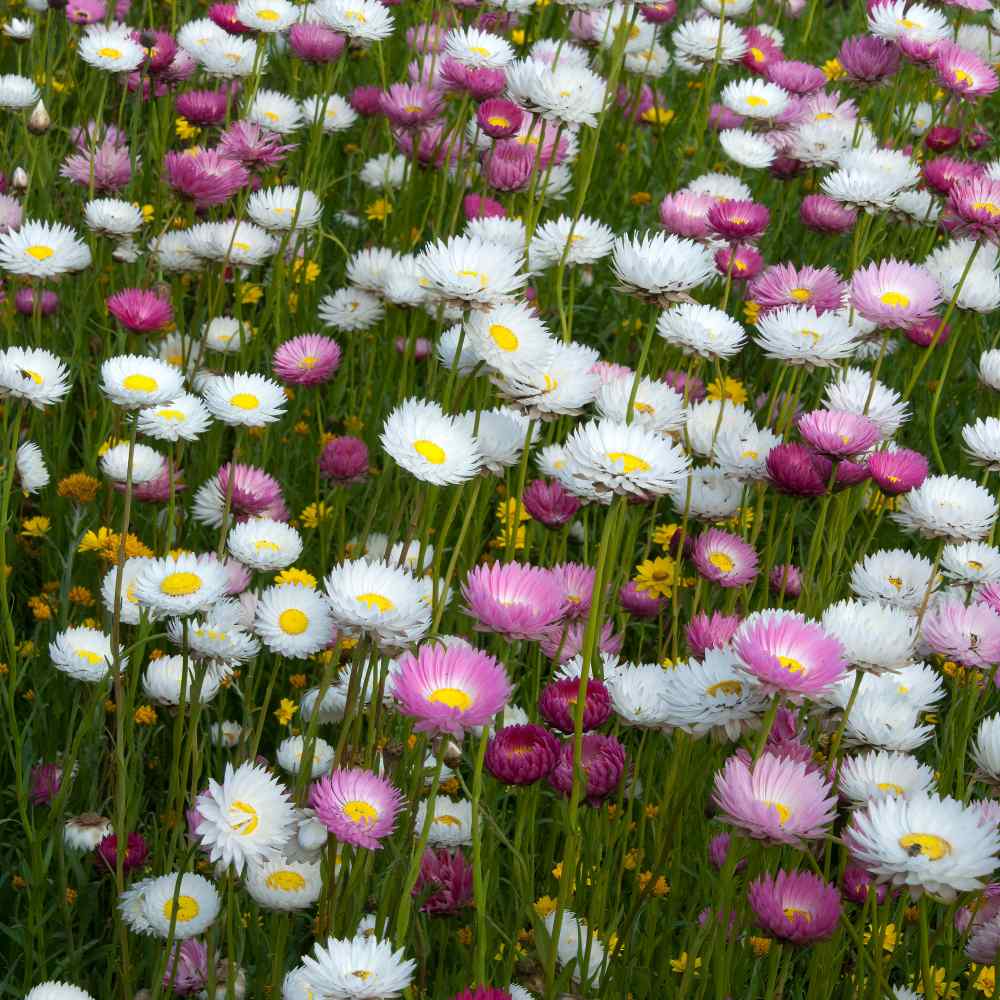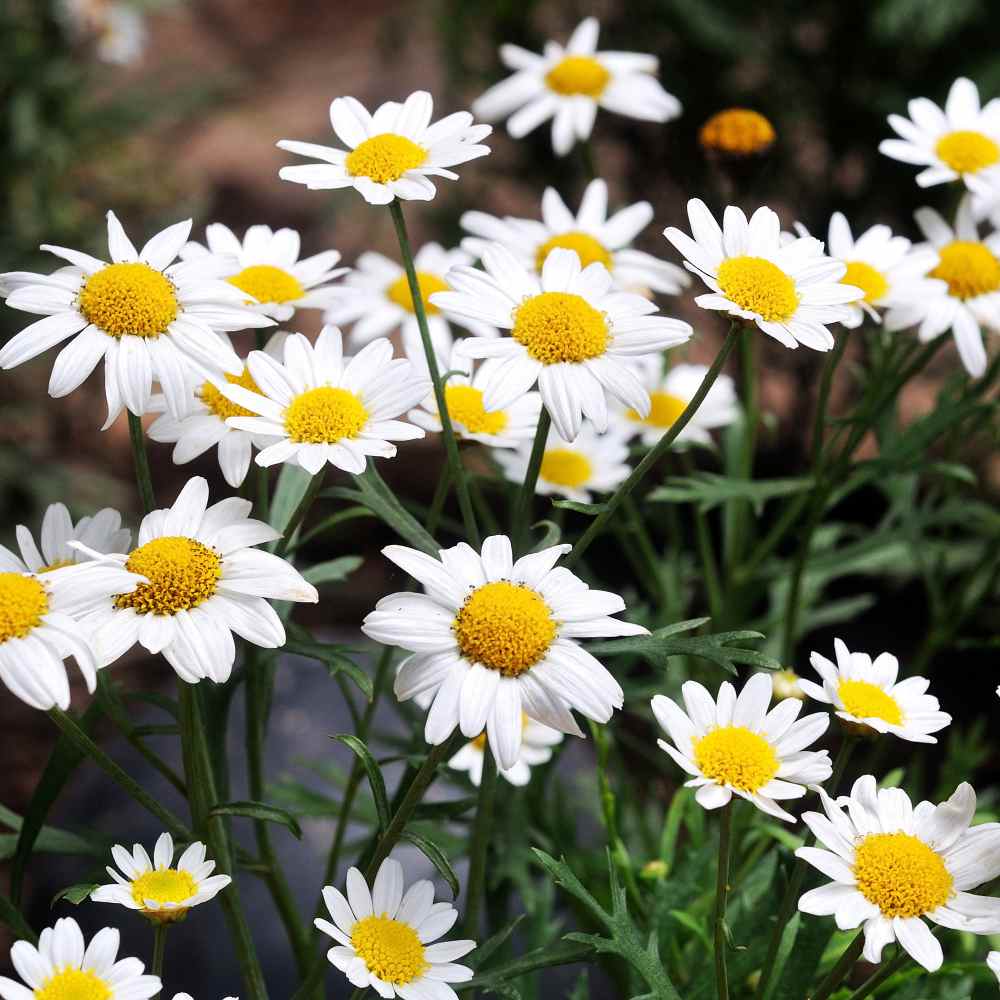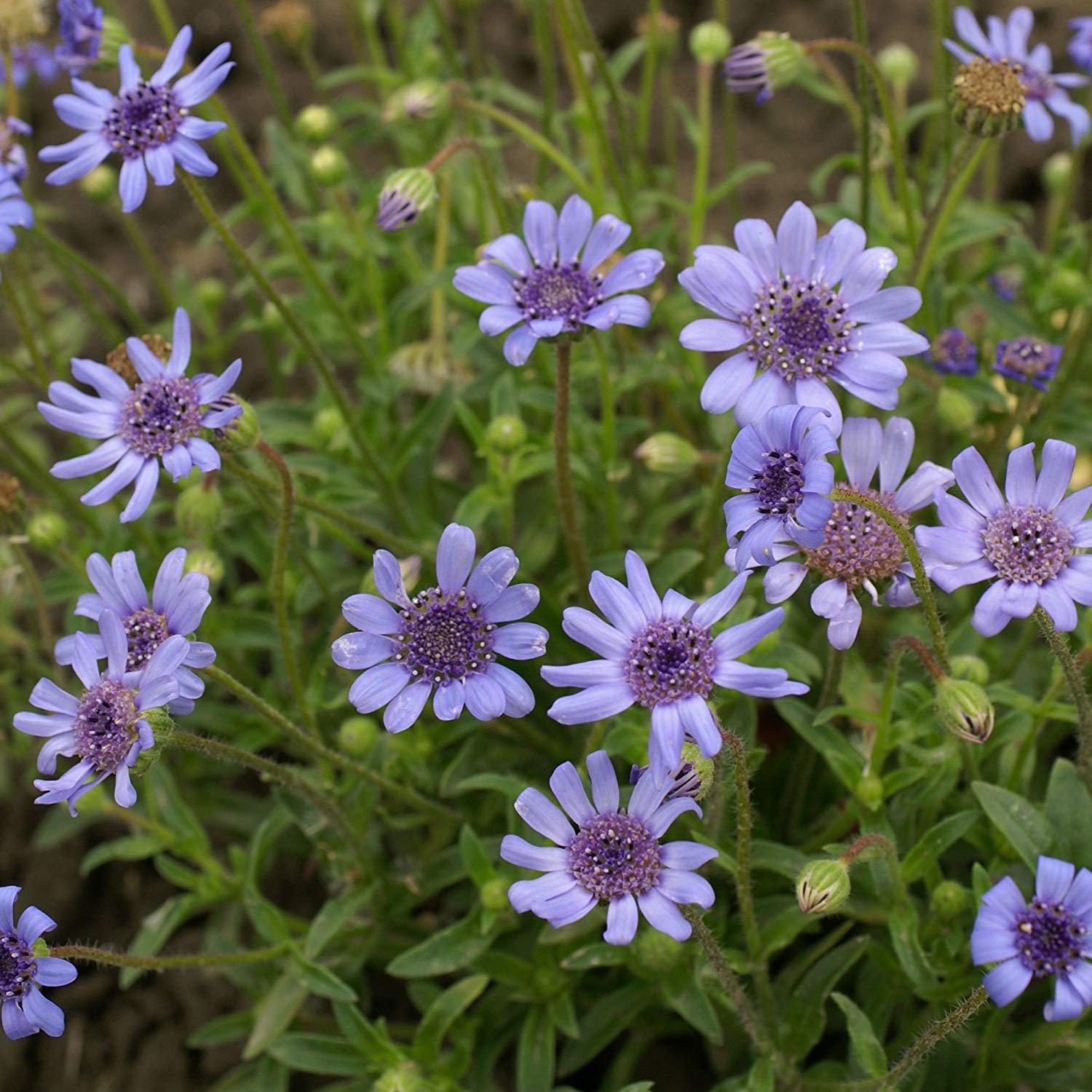
Helipterum Planting and Care Guide
Quick Facts About Helipterum
Commonly known as Paper Daisy, Helipterum is an annual that grows quickly and blooms heavily. These flowers can be dried for use in everlasting arrangements, as they will retain their vivid color. Deadheading spent blooms will keep this plant flowering throughout the growing season.
Planting Time
Helipterum seeds are ideally started indoors 6-8 weeks before the end of frost season, but can also be started directly outdoors after all frost danger has passed.

Planting Location
Plant Helipterum in an area of full sun in average soil that is well-drained.
How to Grow Helipterum
- To start indoors, use trays or small pots filled with a seed starter mix. Surface sow 2-3 seeds per plant and lightly press into soil.
- If sowing directly outdoors, first prepare a seedbed by breaking up soil and removing weeds.
- Keep seeds moist until germination, maintaining a temperature of 65-75F degrees. Under proper conditions, these seeds should germinate in 1-3 weeks.
- Once indoor seedlings have their first few sets of true leaves, they can be transplanted outdoors after all frost danger has passed.
- Before transplanting seedlings into the garden, it's essential to "harden them off". This involves acclimating young plants to outdoor conditions by placing them in a sheltered outdoor area for about a week. Initially, shield them from strong winds and direct sunlight. If there's a risk of frost overnight, either cover the plants or bring them indoors, then return them outside in the morning. This hardening off method helps strengthen the plant's cell structure, minimizing transplant shock and sun damage.

Care And Maintenance
- Keep weeds under control during the growing season. Weeds compete with plants for water, space and nutrients, so control them by either cultivating often or use a mulch to prevent their seeds from germinating.
- Mulches play a vital role in preserving soil moisture and ensuring consistent soil temperatures. When it comes to annuals, using organic mulch made from shredded leaves not only enhances the appearance of the bed but also enriches the soil as it decomposes over time. Remember to keep mulch away from the plant stems to avoid potential rot issues.
- Helipterum is fairly drought-tolerant once established, and only needs to be watered once soil is dry.
- Helipterum generally doesn't require fertilization, but can benefit from soil that has been amended with organic matter.
- Deadhead regularly to maintain appearance and encourage further blooming.




































